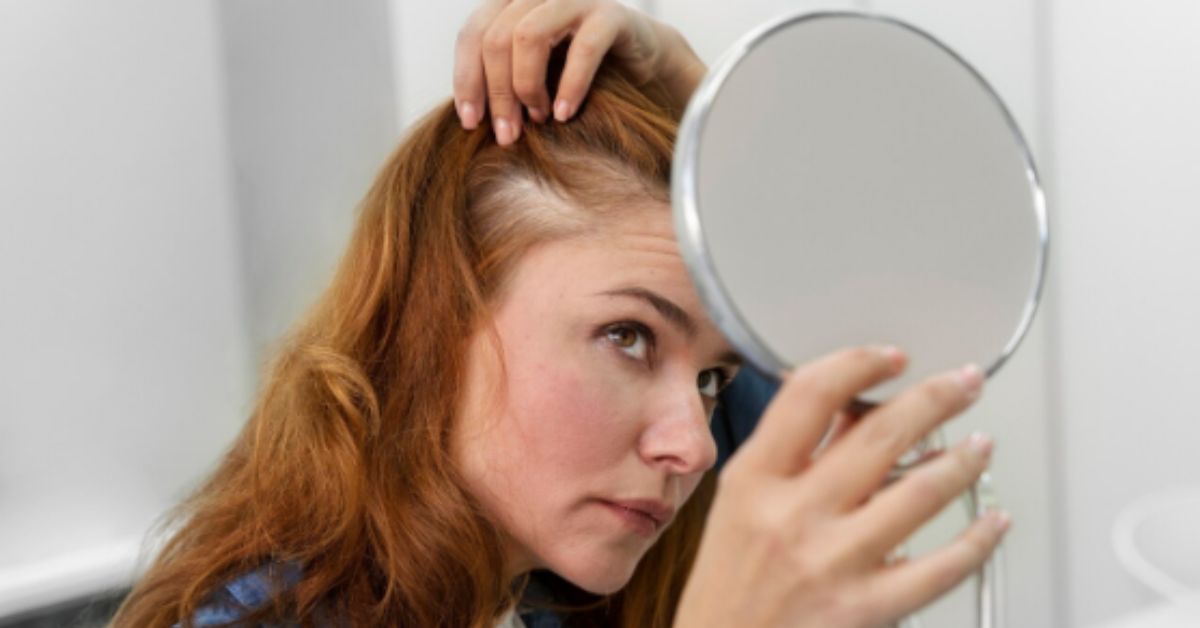Noticing extra strands in your hairbrush or shower drain can be alarming. Hair loss is a common concern that affects people of all ages and genders, and it often raises the same question: Why is this happening to me? Understanding the root cause of your hair loss is the first step toward finding the right solution. In this post, we’ll explore the most common reasons behind hair loss and share practical steps you can take to manage and possibly reverse it.
Common Causes of Hair Loss
1. Genetics (Hereditary Hair Loss)
Also known as androgenetic alopecia, this is the most common form of hair loss in both men and women. Men often experience a receding hairline or thinning on the crown, while women may notice a general thinning across the scalp. If your parents or grandparents experienced hair loss, there’s a good chance you might too.
2. Hormonal Changes
Hormones play a major role in hair health. For women, pregnancy, childbirth, menopause, or discontinuing birth control pills can all trigger temporary hair loss due to sudden hormonal shifts. In men and women alike, imbalances in thyroid hormones can also lead to thinning hair.
3. Stress and Emotional Trauma
Significant physical or emotional stress can shock the hair cycle, pushing more hair into the shedding phase (telogen effluvium). Events like surgery, a serious illness, or even emotional turmoil such as a breakup or job loss can trigger this type of temporary hair loss.
4. Nutritional Deficiencies
Your hair needs nutrients to grow and stay strong. A lack of essential vitamins and minerals—especially iron, vitamin D, zinc, and B vitamins—can lead to weak, brittle strands and excessive shedding. Crash dieting or eating disorders can also rob your body of the fuel it needs for healthy hair growth.
5. Medical Conditions
Several health issues can contribute to hair loss. Autoimmune diseases like alopecia areata cause the immune system to attack hair follicles. Scalp infections like ringworm or chronic illnesses such as lupus and diabetes can also disrupt the normal hair growth cycle.
6. Medications and Treatments
Certain medications, such as chemotherapy drugs, blood thinners, antidepressants, and treatments for high blood pressure, can cause hair loss as a side effect. If you’ve recently started a new medication, check with your doctor to see if hair loss could be a side effect.
7. Hair Care Practices
Overuse of heat styling tools, harsh chemical treatments, tight hairstyles (like braids or ponytails), and frequent dyeing can damage the hair shaft and cause it to break or fall out. This condition, known as traction alopecia, is often reversible if caught early.
What You Can Do About Hair Loss
1. Consult a Healthcare Provider
The best place to start is with a dermatologist or your primary care doctor. They can evaluate your scalp, run tests if needed, and help determine the underlying cause. Don’t try to self-diagnose—many causes of hair loss look similar but require different treatments.
2. Improve Your Diet
Fuel your hair from the inside out by eating a well-balanced diet rich in protein, iron, omega-3 fatty acids, and vitamins A, D, and E. Leafy greens, eggs, fish, nuts, and whole grains are all excellent choices to support hair health.
3. Manage Stress
Since stress is a common trigger, finding ways to manage it can help reduce hair loss. Try regular exercise, meditation, journaling, or engaging in relaxing hobbies. Even a simple daily walk can make a difference.
4. Be Gentle With Your Hair
Avoid excessive brushing, tight hairstyles, and heat styling. Opt for wide-tooth combs, use sulfate-free shampoos, and consider letting your hair air-dry. A little extra care can go a long way in preventing further damage.
5. Explore Medical Treatments
Depending on the cause of your hair loss, a variety of treatments may be recommended. These can include topical solutions like minoxidil (Rogaine), oral medications such as finasteride (commonly used for male pattern baldness), corticosteroid injections for autoimmune-related hair loss like alopecia areata, or more advanced procedures like hair transplants.
In addition, light-based therapies—such as red light therapy—have shown promising results in stimulating hair growth. If you’re in the Mattawan, MI area, consider scheduling a red light therapy session with a local provider as part of your treatment plan. Be sure to consult with a medical professional to determine which approach is best suited for your specific condition.
Final Thoughts
Hair loss can be a distressing experience, but it’s important to remember that you’re not alone—and in many cases, it’s treatable or reversible. By identifying the root cause and taking proactive steps, you can regain not only your hair but also your confidence. Whether it’s through lifestyle changes, medical intervention, or simply being kinder to your scalp, small efforts can lead to healthier hair and a happier you.

